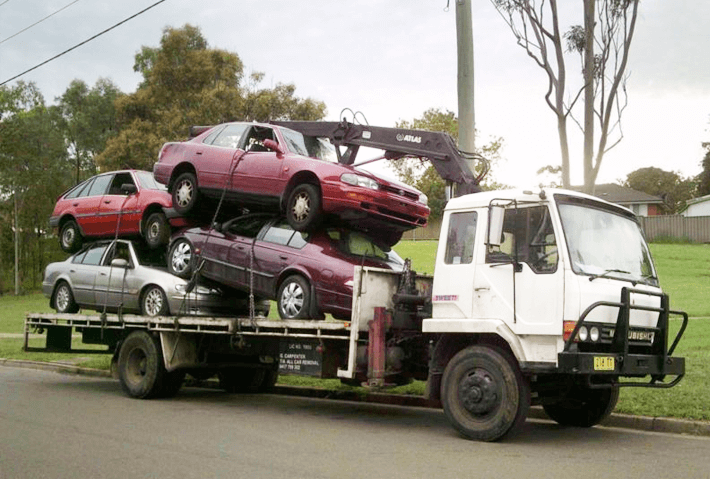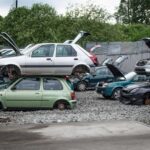When your vehicle gets damaged in an accident, the next steps are not always simple. From insurance formalities to clearing the scene and arranging removal, each stage plays a role in how the process unfolds. Removing the unwanted car after an accident is one of the most important aspects to manage responsibly. It helps avoid safety hazards, ensures proper recycling, and clears the way for insurance or replacement.
Contents
- 1 Why Removal Matters After a Crash
- 1.1 Immediate Steps Following Removal
- 1.2 Fluid Draining and Hazardous Waste Handling
- 1.3 Separation of Usable Parts and Scrap
- 1.4 Battery, Tyre and Airbag Disposal
- 1.5 Sorting Materials for Recycling
- 1.6 Record Keeping and Legal Compliance
- 1.7 Clearing the Accident Site
- 1.8 A Community-Focused Example
- 1.9 How Removal Affects Insurance Claims
- 1.10 Understanding Salvage and Rebuild Options
- 1.11 Cost and Timeline Expectations
- 1.12 Tips for Owners to Prepare the Vehicle
- 1.13 Final Site Inspection and Eco‑Responsibility
- 1.14
Why Removal Matters After a Crash
A vehicle that has been in a collision may no longer be safe to drive or repair. In such cases, removing the vehicle is necessary not only to restore traffic flow or clear private property, but also to reduce environmental and safety risks. Leaking fluids can harm soil and water. Sharp metal, broken glass, or exposed wires can injure people or animals. Timely removal ensures the area is safe and the vehicle moves into proper disposal channels.
Immediate Steps Following Removal
Once the vehicle is collected from the scene, it is taken to an authorised yard or wrecking facility. Here, trained staff inspect it for damage and perform an initial assessment. This includes checking for hazardous materials, leaking oil or fuel, battery condition, and fire risk. The vehicle is then placed in a secure holding area where further processing begins.
Fluid Draining and Hazardous Waste Handling
Cars involved in accidents often contain engine oil, coolant, transmission fluid, brake fluid, and fuel. These must be drained carefully to avoid contamination. Draining systems capture these fluids into sealed containers. Some are filtered and reused, while others are disposed of following local environmental guidelines. Special care is taken when handling batteries or air conditioning gas, which can be harmful if released.
Unwanted cars in Tivendale can be removed easily through local services:
https://pscarremoval.com.au/locations/tivendale/
Separation of Usable Parts and Scrap
Once fluids are removed, the car is dismantled. Technicians salvage parts that remain in working condition, such as side mirrors, bumpers, tyres, alternators, doors, or gearboxes. These may be tested and offered for reuse or resale. Damaged panels and unusable parts are separated and sent for metal recycling. Materials such as steel, aluminium, and copper are commonly recovered.
Battery, Tyre and Airbag Disposal
Car batteries are usually removed early in the dismantling process. These contain lead and acid, both of which are toxic. Specialised recycling facilities process the batteries to reclaim usable materials. Tyres are sent to be reused, repurposed, or recycled into products like road base or playground mulch. Airbags, due to their chemical inflators, are removed and safely deactivated.
Sorting Materials for Recycling
Modern vehicles are built with more than just metal. From plastic trims and glass to textiles and rubber, there are many components that need sorting. Rear windows and windshields may be crushed and recycled. Interior fabrics may be stripped and used in insulation. Plastic panels and dashboards are sorted by resin type for proper disposal. This structured approach supports eco-friendly vehicle disposal.
Record Keeping and Legal Compliance
Removing a damaged car requires attention to record keeping. Yard operators must keep logs of the vehicle’s arrival, processing dates, and how different parts or fluids were handled. For owners, it is important to keep the receipt or certificate of vehicle removal, especially when dealing with insurance companies or transport departments. Cancelling registration may also require this document.
Clearing the Accident Site
When a vehicle is removed from an accident location, the site itself may still have scattered debris like broken glass, plastic shards, or oil residue. Many removal teams assist with a quick site check to remove hazards. This step is especially important on public roads to avoid accidents involving pedestrians or cyclists.
A Community-Focused Example
In areas like Pinelands, local residents value safe and organised car removal after accidents. A service offering Unwanted Car Removal Pinelands ensures vehicles are picked up without delays and taken to licensed facilities. By handling wrecked cars responsibly, the service helps keep neighbourhoods clean and streets hazard-free. The goal is not just removal but thoughtful and timely action that protects both the public and the environment.
How Removal Affects Insurance Claims
Having a car removed promptly after a crash can help move your insurance claim forward. Some policies require photo proof of the vehicle’s damage and removal. The yard’s receipt, showing that the vehicle was taken to a legal dismantler, also supports your claim. In some cases, it may help you qualify for policy adjustments or stop further registration fees from accruing.
Understanding Salvage and Rebuild Options
Not every damaged car is ready for scrapping. Some still carry salvage value. Licensed dismantlers may provide a basic evaluation, letting you know whether the car has repair potential. This allows you to decide whether to write it off or arrange for repairs. Salvage titles may also be issued depending on the extent of damage and the insurance status of the vehicle.
Cost and Timeline Expectations
In most regions of Australia, vehicle removal after an accident can be completed within a day or two once arrangements are made. The actual removal is typically included in the vehicle’s salvage value or scrap worth, meaning you may not have to pay anything directly. Once removed, the vehicle is processed for parts or materials, which can take up to several days.
Tips for Owners to Prepare the Vehicle
Before the tow truck arrives, you should take out all personal belongings. Remove toll tags, parking permits, or devices like dash cams. Wipe any data from your infotainment system if possible. Keep your registration papers or proof of ownership ready, as the removal team may request them for identification.
Final Site Inspection and Eco‑Responsibility
A licensed car removal team will make sure the accident site is cleared and safe before leaving. They may use absorbent material to soak up fluids and sweep up debris. This attention to detail protects the community and helps meet environmental responsibilities. Cars are a major source of recyclable material, and when dismantled properly, they contribute to reducing waste.


